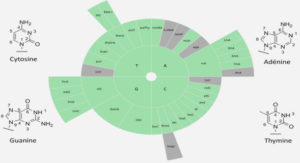The Quest for Identity in Jamaica KINCAID’s Annie John and Jean RHYS’ Good Morning, Midnight
The Issue of Identity in Annie John
After learning some of the most striking biographical elements about the author, the issue of identity in Annie John will be examined through three ways: firstly the theme of mother‘s love, affection, estimation and attention, secondly the history of slavery in Antigua, and thirdly the geographical setting, cultural background and some religious matters within Antigua, Jamaica KINCAID and Annie John. Jamaica KINCAID was born on May 25th, 1949 at Holberton Hospital in St. John, Antigua. She was originally named Elaine Potter Richardson. Richardson was her mother’s surname. Her parents were not married and her biological father never played a role in her life. Her mother, Annie, married her stepfather, David Drew, soon after KINCAID‘s birth. Kincaid considers Drew her father and he serves as the model for the fathers in each of her novels. Annie and David Drew had three subsequent children, all boys. Jamaica KINCAID’s mother taught her to read at the age of three. KINCAID won a scholarship to the Princess Margaret School and excelled as a student, despite her occasionally mischievous attitude. After her father fell ill, however, KINCAID, as the girl in the family, dropped out at the age of thirteen. She left Antigua at age seventeen and moved to Scarsdale, New York to work as an au pair. According to the Cambridge Advanced Learner‘s Dictionary11, the word « au pair‖ means: « a foreign person, usually a young woman, who lives with a family in order to learn their language and who looks after the children or cleans the house in return for meals, a room and a small payment ». Elaine Potter Richardson or later on Jamaica KINCAID stayed in Scarsdale for a few months, before moving to Manhattan to be an au pair for the family of Michael Arlen, a New Yorker writer. She remained with the Arlen family for four years. As she worked, KINCAID acquired her general equivalency diploma and started taking photography classes at the New 11Cambridge Advanced Learner‘s Dictionary. (2003). Printed by the Cambridge University Press. United Kingdom. pp.71-72. 11 School for Social Research. Eventually, she won a scholarship to Franconia College in New Hampshire, but dropped out after two years. After returning to New York in 1973, she changed her named to Jamaica KINCAID to be anonymous as she tried her hand at writing. Ingenue published her first article, « When I was Seventeen, » in the same year. She soon became friends with Scott Trow, who wrote the « Talk of the Town » column in the New Yorker. Trow eventually introduced her to William Shawn, the magazine’s editor. In 1976, KINCAID became a New Yorker staff writer herself. In 1979, she married William Shawn’s son, the composer Allen Shawn. They had two children, Annie and Harold, in 1985 and 1988. They currently live in Bennington, Vermont where Shawn is a professor at Bennington College. a) Mother’s Love, Affection, Estimation and Attention KINCAID lived on Antigua for the first 17 years of her life. At first she had a loving relationship with her mother, being the only child; she was the center of her mother‘s affection. This affection is even emphasized through the main character of her novel, Annie John when she admits the following and short sentence: How important I felt to be with my mother. (RHYS, 15) This sentence, although its shortness is deeply meaningful in terms of love, poignant affection and attention. It shows to some extent the tenderness, proximity and a warm comfort that an upbringing can have from her mother. In Annie John, the main character, in many occasions from the beginning of the storyline on, is putting the emphasis on her love and mother‘s preference and good appreciation among both parents. This is illustrated for instance in the following passage: « When my eyes rested on my father, I didn‘t think very much of the way he looked. But when my eyes rested on my mother, I found her beautiful. Her head looked as if it should be on a sixpence. What a beautiful long neck, and long plaited hair, which pinned up around the crown of her head because when her hair hung down it made her too hot. Her nose was the shape of a flower on the brink of opening. Her mouth, moving up and 12 down as she ate and talked at the same time, was such a beautiful mouth I could have looked at it ever if I had to and not mind. Her lips were wide and almost thin, and when she said certain words I could see small of white teeth –so big, and pearly, like some buttons on one of my dresses… »(RHYS, p. 18). Here Annie John, the narrator makes with precision and preciousness a physical description of her beloved mother. She appreciates her mother‘s feathers as if she is underlining her own ones. She put the emphasis of her mother‘s beauty as her own one. She underlines her perfection as the one a good mother should have. The reader may guess that she has the same living image as her mother. So, there is a perfect resemblance between mother and daughter throughout the storyline from Annie‘s words. In addition to that, there is a kind of complicity between mother and daughter as they are doing the home work together. And, what is it about Annie‘s appreciation towards her father? « When my eyes rested on my father, I didn‘t think very much of the way he looked… » (KINCAID, p.18) There is emptiness in the relationship between Annie John and her father. In fact, it is not surprising enough because there are not natural links between them. In fact, her father had once loved other women and had with them some children even if he had never married them in his life before getting married with Annie John‘s mother. And, one of these women was said always to be trying to harm Annie John and her mother by setting bad spirits on them, according to Annie herself12 . In her essay on KINCAID, Izabella PENIER (ŁÓDŹ)13 will try to demonstrate that this woman-centred text, based on KINCAID‘s Caribbean and American experience, reformulates the meaning of the Diaspora/ migrant identity and expands the Black Atlantic model by adding an important counterpoise to its male dominated discourse…. In The Reproduction of Mothering (l978)14 , Chodorow documented the pattern of absolute dependence in a primary love relationship that links the child to the nurturing mother paying special attention to the role the mother plays in the formation of gendered identity. According to Chodorow, mothering is a process geared to producing female children who would fit into private domestic world, leaving the male children to the public world (Chodorow, p. 174). In Chodorow‘s argument, growing up into womanhood means coming to terms with « ideology, meanings and expectations that go into being a gendered member of our society » (Chodorow, p. 98). Girls are expected to be ―continuous,‖ ―more like‖ their mothers than boys and they are not supposed to individuate themselves as distinct from their mothers (Chodorow, p. 166). Admittedly, the findings of feminist psychoanalytic theory formed an important framing and structural apparatus that illuminated the inner life of KINCAID‘s young protagonist. Even so some critics questioned the applicability of white feminist prescriptive models to a Caribbean context on the grounds that white feminist critics tend to consider all texts written by female authors as receptacles of universal values rather than manifestations of racial, ethnic, economic and regional differences. The literary critic, contended Laura Niesen De Abruna15, must take into consideration various issues –not only gender, but also race, class or postcolonial theory –as these issues come forth in literary work. In words of Elizabeth V. Spellman16 « what one learns about one‘s gender identity is the gender identity appropriate to one‘s ethnic, class, national and racial identity » (Elizabeth V. Spellman, p. 88)
The History of Slavery in Antigua
From the 1500s to the 1800s, slave traders sent an estimated 10 to 15 million Africans across the Atlantic to Americas. In some areas, the slave trade had an unsettling impact. The deadly commerce in human beings came to dominate relations among Europe, Africa, and the Americas. The first direct contacts between Europeans and the peoples of West Africa occurred in the early 1400s. By then, Portugal‘s Prince Henry40 was looking for a sea route around Africa to India. He sent explorers to map the coast of West Africa. Prince Henry also hoped to find the kingdoms to West Africa, which had large resources of gold. Gradually, Portuguese sailors explored the African coast. In 1488, Bartholomeu DIAS41 rounded the southern tip of Africa. Ten years later, Vasco da Gama42 followed DIAS‘s route and reached India by sea.The Portuguese and other Europeans built small trading stations on the coast. They traded with small trading stations on the coast. They traded with the peoples of West Africa, exchanging iron and copper for fish, sugar, ivory, gold, and pepper. The Europeans also brought Christian missionaries, who set out to discover Africans to Christianity. During the 1400s, Europeans brought a few Africans as slaves and carried them to Europe. The demand for slaves was limited, however, until Europeans began to settle the Americas. European rulers required a large labor force to make their American colonies profitable. At first, they used Native Americans to mine gold and silver and to work their plantations, but many died. Europeans then looked to Africa. They thought that Africans would be able to survive in the tropical climates of the Caribbean and the Central America. Forcing people into slavery did not begin in the 1500s. In Africa, as elsewhere around the world, slavery had existed since ancient times. Most slaves in Africa were people who had been captured in war. Others had sold themselves into slavery during times of famine. In many African societies, slaves were part of the community. They were treated as servants rather than property –according to an Ashanti saying: « A slave who knows how to serve inherits his master‘s property. » In time, slaves or their children might become full members of the society.
Introduction |





